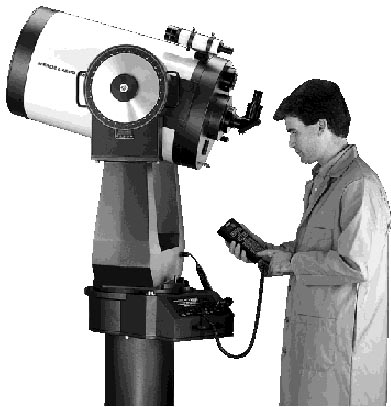
Located on the Center's fifth-floor overlook, the new facility replaces
the former rooftop observatory that transmitted images to the video wall
outside the planetarium, but was inaccessible to the public. Now visitors
themselves can go to the observatory and star-gaze through the new, 16-inch
professional grade Meade LX-200 Schmidt-Cassegrain reflecting telescope.

The new observatory will still transmit real-time and archived astronomical images to the video wall, as well as to monitors in the Science Center's exhibit areas. It will also enhance astronomy classes, workshops and other programs conducted at the Center.
Pittsburgh now has the most advanced technology ever built into a commercial telescope.
The new telescope is controlled by a computer system that automatically guides it to any one of 64,359 celestial objects programmed into the telescope computer's database. The computer then centers the chosen astronomical object in the telescope's field of view.
Equipped with filters to reduce the effects of bright city lights, the telescope visually detects objects almost 10,000 times fainter than the faintest celestial object visible to the unaided eye. A CCD, or charge couple device, enables Science Center astronomers to image and color-enhance astronomical objects to make visible the very finest detail.
Teachers and students, as well as the general public, will soon have direct access to the telescope's image database over the Internet via Carnegie Science Center's World Wide Web homepage (www.csc.clpgh.org/). Direct links exist between the observatory and local media for coverage of major astronomical events such as solar and lunar eclipses, planetary oppositions, meteor showers and the apparition of bright comets.
The observatory is open for public viewing Saturday evenings 7:00–9:00 p.m., weather permitting. Special after-hours sessions will be offered for public viewing of major astronomical events.
Paul Oles is the former assistant director for the Omnimax, Planetarium,
Observatory and Weather Service at Carnegie Science Center.